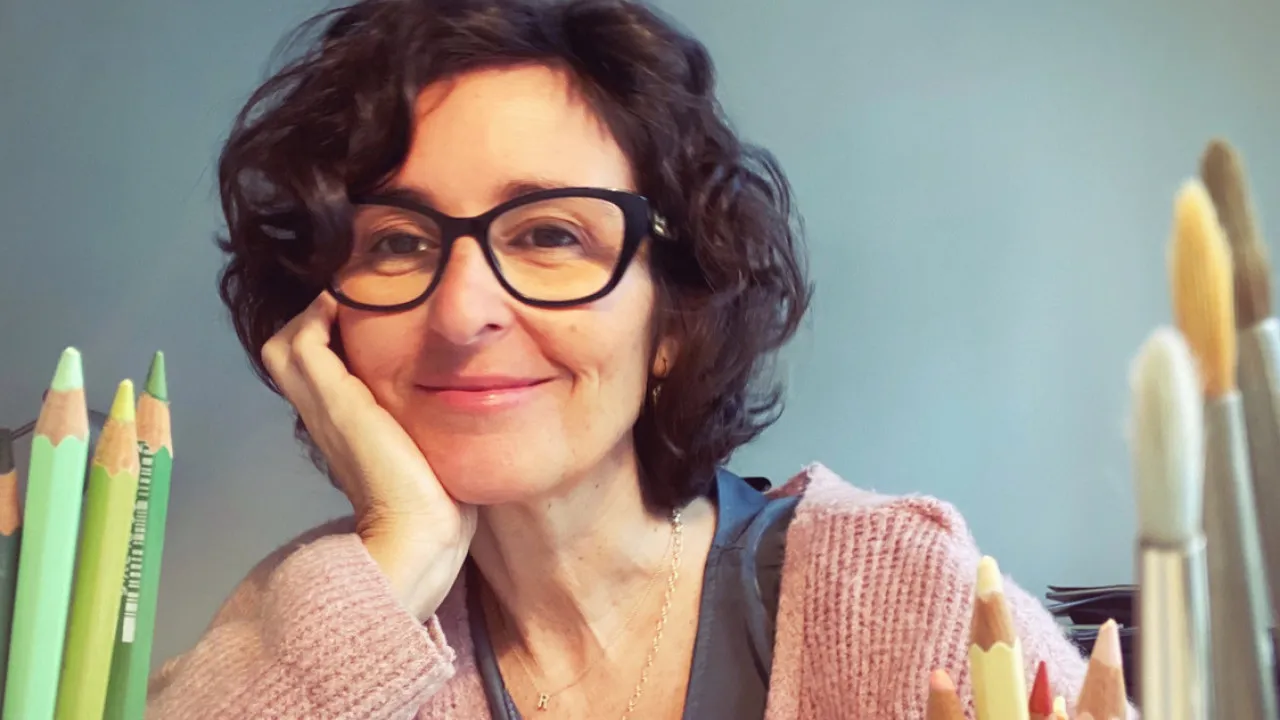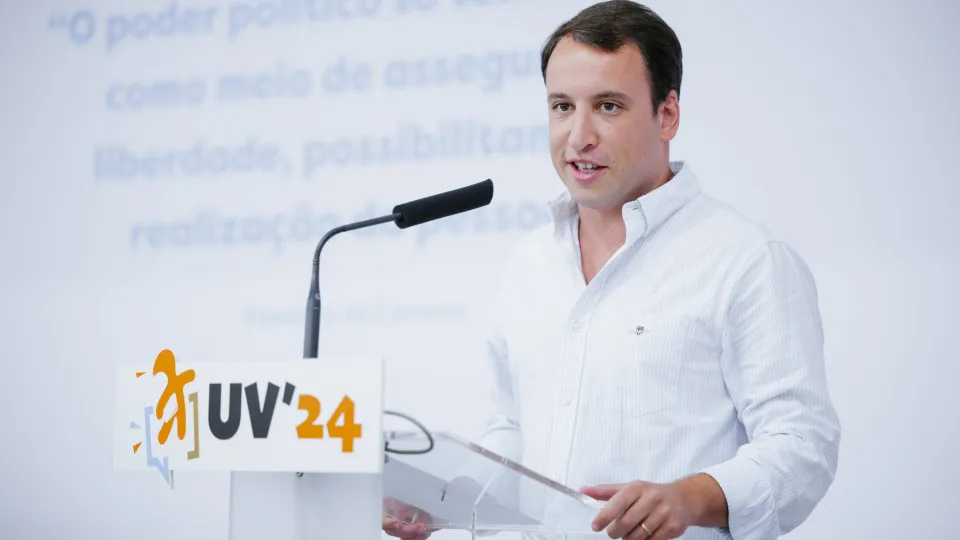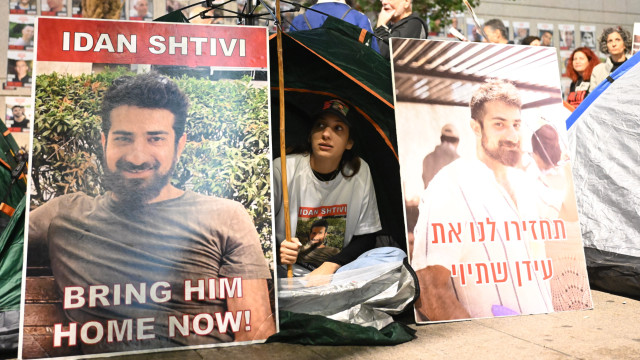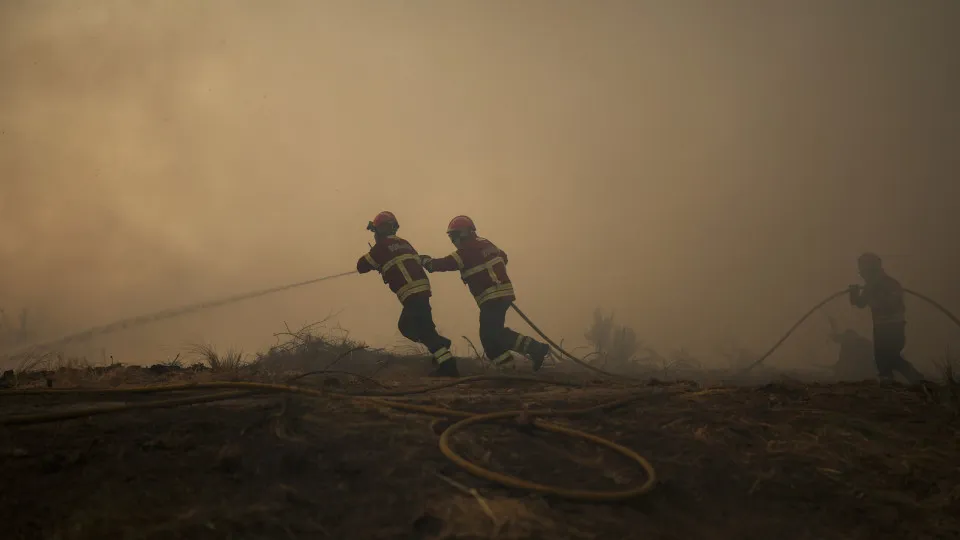
If you have children, you are likely familiar with the illustrator Rocio Bonilla. The Catalan native is behind some of the biggest hits in children’s literature over the past fifteen years.
Among her most iconic (and award-winning) books are ‘What Color is a Kiss?’, ‘What is Love, Minimoni?’, ‘The Highest Mountain of Books in the World,’ and the ‘Bebémoni’ series.
Recently, the illustrator visited Lisbon to attend the Book Fair. This provided an opportunity to discuss her latest releases — ‘A Story of Monsters’, ‘Bebémoni – Bath Time’, and ‘Bebémoni – I’m Angry!’, all published in Portugal by Jacarandá — and much more.
In an interview, Rocio Bonilla, who has about 50 children’s books published and translated into over 20 languages, spoke about the importance of reading, challenges in the world of writing, the contribution of her three children to her works, and the dangers of screen time.
‘A Story of Monsters’ is one of your most recent books. What is the story about?
It’s the tale of twin siblings who love to bake cakes and usually go to the market every week to buy ingredients. However, one day they discover the market holds a frightening secret! They must investigate to find out what it is. It’s a book meant to entertain and delight readers. It is slightly scary, somewhat mysterious, but also very humorous. My characters are, as always, curious children eager to learn, inviting us to explore, investigate, and be creative in finding solutions to problems. All this happens amidst delicious cakes!
Just because they are small doesn’t mean they are foolish; quite the contrary, they are an extremely demanding audience
You recently launched two new stories for babies featuring Bebémoni. How can such an incredible and successful character assist children during bath time and when they’re angry?
I think Bebémoni, like Minimoni, is a successful character because children clearly identify with her. She is funny, intelligent, and shares this unique logic. That’s why she connects with younger readers.
You mentioned recently that good children’s literature is one that doesn’t leave children indifferent. What tricks do you use to reach the hearts of the little ones and lightly discuss important themes such as friendship, love, boredom, bullying, and many other emotions?
I fully believe that offering challenges to readers is necessary. Just because they are small doesn’t mean they are foolish; quite the contrary, they are an extremely demanding audience. When I sit down to plan a new book, I try to do it from the perspective of little Rocío, seeing life through a child’s eyes again. I need to laugh, have fun, and get emotional. Creativity is linked to play. I think that’s the trick to connect with them because the book ultimately offers a game to the reader, who decides to take up the challenge if it interests them.
How does your experience as a mother influence your books?
It influences a lot, being a constant inspiration! I always said that reality surpasses fiction [laughs].
Fighting against screen time is very difficult. In the case of my little Enric, for instance, comic strips have helped a lot. This literary genre has been underestimated for a long time, but it is equally valuable
You have said that your children are your biggest fans but also your harshest critics. Why is that? Is there any particular episode you would like to recall?
I usually show them my work in progress, and each of them has a different response. Blanca, my middle daughter, writes very well and provides a complementary perspective. I like to show the illustrations to Enric, my youngest son. Watching where his gaze travels and awaiting his reaction is crucial. If he smiles, I’m on the right track. On the other hand, Júlia, my eldest, is the one who imposes limits. As I am very perfectionist and sometimes spend days retouching an illustration, when I ask, ‘What do you think? Do you like it?’, she replies, ‘Mom, there’s a point when you must know to stop.’ At that moment, she seems like the mother! [laughs]
In such a digital era, it isn’t always easy to get children to read. What tricks do you use with your own kids?
That is a complex question… I think, first and foremost, children should see a love for reading at home. In my case, both parents are avid readers, yet it has been different with each of my children. Fighting against screen time is very difficult. In the case of my little Enric, for instance, comic strips have helped a lot. This literary genre has been underestimated for a long time, but it is equally valuable.
In your opinion, what do books offer that screens do not?
Screens provide manufactured content. Books invite us to create our own content, imagine a universe, be critical, reflect, and let our imagination fly. I concede that it is very attractive and tempting to have fun without any effort, but as of now, there is no screen that offers us the experience that an illustrated book does.
What is your creative process? How has this process changed over the years?
Over time, one gains experience, both theoretical and technical. What used to take four days can now be done in two. However, we cannot stagnate in what we already know how to do. Instead, we must challenge ourselves to try what we haven’t mastered yet. This approach allows us to enjoy those four days with the same intensity but with qualitative progress.
Minimoni, inspired by your niece, is one of your most charismatic characters. But there’s also Lucas, Greta, Bebémoni, and now Telma and her twin brother. Do you have a special fondness for any of them?
I love them all equally! To me, they are all special, like children… I can’t choose among them!
Are you already thinking about your next book? What can you tell us about it?
Currently, I am really focused on the Lucas Kent & Greta Rouge series. I just illustrated the second chapter, which will be published in Spain this autumn, and I am already writing the third and fourth chapters. Some very fun adventures are coming up, and I am sure readers will love them!




